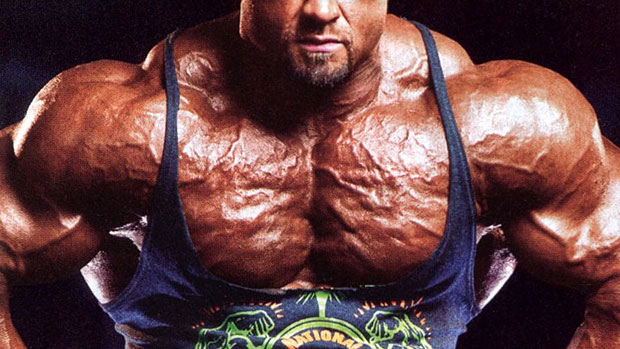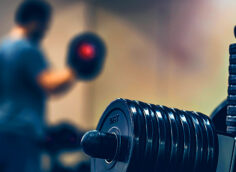When it comes to lower-body bodyweight exercises, the walking lunge gets all the love. It's a great exercise, no doubt. The only problem? Walking lunges require a fairly large space. Not great for training at home. Forward lunges are an option, but they have a tendency to be a knee-killer for lifters with cranky joints.
Enter the skater squat. This tough exercise doesn't require a lot of space, and the only additional weight you need is something light to act as a counterbalance.
Skater squats are far tougher than they look. Many strong lifters will shake like a leaf the first time they try them.
- Grab a 2-4 inch object like an Airex pad or thick book to use as a target for your knee. You can increase or decrease the range of motion as needed.
- Hold some type of counterbalance. Anything that weighs between 5-10 pounds should do. The point of the counterbalance is to shift the center of mass forward and enhance control, not to increase difficulty.
- Press the counterbalance out on the eccentric portion of the movement and lower under control. To maximize tension, slower is better.
- Bring the counterbalance back in on the concentric portion of the movement. This will prevent your shoulders from gassing out before your legs do.
- Add a slight pause at the bottom to kill the stretch reflex.
- Slow down the eccentric or lowering part of the movement.
- Increase the range of motion.
- Add a weight vest if you have one handy.
- Do 1.5 reps: all the way down, halfway up, back down, all the way back up. That's one rep.
1. They're a hybrid squat/hinge.
Skater squats are unique in that they're more knee-dominant than most hinge-based exercises and more hip-dominant than any type of single-leg squat. This makes them similar to the trap-bar deadlift in a sense as they hit both the anterior and posterior chain.
2. They can build strength and size throughout the entire lower body.
Skater squats aren't typically thought of as a big mass-builder because they don't involve any extra weight. But muscles don't respond to weight; they respond to tension. Skater squats impose an unreal amount of tension on the quads, glutes, and hamstrings.
3. They clean up movement mechanics and bulletproof the lower body.
Since they're entirely unsupported – the non-working leg doesn't contribute – skater squats amplify the benefits of unilateral work like targeting asymmetries, addressing weak links, and dialing in crisp movement mechanics. This makes them a phenomenal option for improving lower-body health and function.
4. They can have a direct carryover to strength in the big lifts.
Skater squats address many common issues that can hold lifters' strength numbers back. They reinforce good squat and hinge mechanics, challenge the core to remain tight, and strengthen some of the neglected muscles of the lower body like the adductors, glute medius, and external rotators of the hip - each of which can enhance strength in the squat and deadlift.




